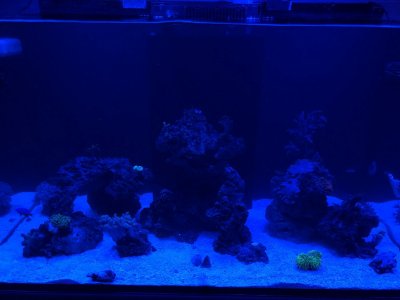- Joined
- Feb 13, 2019
- Messages
- 417
- Reaction score
- 244
Thank you... so just to clarify you stopped messing with the sand bed and noticed improvement? I did too untill i decided to blast the rocks last night
Yes, personally i noticed improvement when i stopped siphoning the sand bed and started doing weekly water changes. I had literally tried everything before that. Using my 18" feeder syringe to lightly disconnect the dino's from the top layer of sand every single day into water column. Then collect it by removing the filter flosses daily. I also decreased my light to about 6 hours a day for a few weeks, then increased it by 15 minutes a week to get it back to 7.5 hours. The first couple water changes i actually siphoned out a little bit of the top layer of sand where the dino's were the most present. I'd say I took about maybe 10% of my sand.
I used to siphon the sandbed, and i think by doing so I would keep removing beneficial bacteria. Adding other live rock from established tank I think also helped the problem. There isn't enough good bacteria in your tank. Need to diversify from known established tanks and just keep cleaning & removing. It'll go away eventually.

















